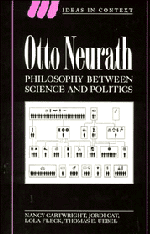Part 3 - Unity on the earthly plane
Published online by Cambridge University Press: 17 December 2009
Summary
TWO STORIES WITH A COMMON THEME
Neurath founded the Unity of Science movement in 1934. For Neurath – a social scientist – the drive for unity was rooted in the great debates between Carl Menger and his thesis examiner, Gustav Schmoller, about the nature of political economy and in Max Weber's insistence that the social sciences are indeed sciences, although sciences of a different type from physics. In this setting, unity of science necessarily meant unity of the social and the natural sciences. For Neurath it meant both more and less: he did not look for a sweeping philosophical union of two great domains of human thought, but rather for the practical unification of the rich variety of special disciplines in all their detail. Unity for him was not a matter of a single metaphysics for natural and social law as Menger advocated nor of one epistemology to mend the rift that Weber imposed; and it was not a unification once and forever. Instead Neurath laboured for different combinations of concrete lessons from different sciences at each and every occasion of rational action. Car nap had proposed an Aufbau, one gigantic structure into which every valid science could in principle be fitted. Unity for Neurath was not a matter of abstract philosophical principle nor a programme for constructing a complete world picture. It was a tool for changing the world; in his own vocabulary ‘an auxiliary motive’. We aim, he argued ‘to create a unified science that can successfully serve all transforming activity.’
- Type
- Chapter
- Information
- Otto NeurathPhilosophy between Science and Politics, pp. 167 - 252Publisher: Cambridge University PressPrint publication year: 1996
- 1
- Cited by

